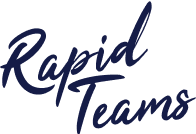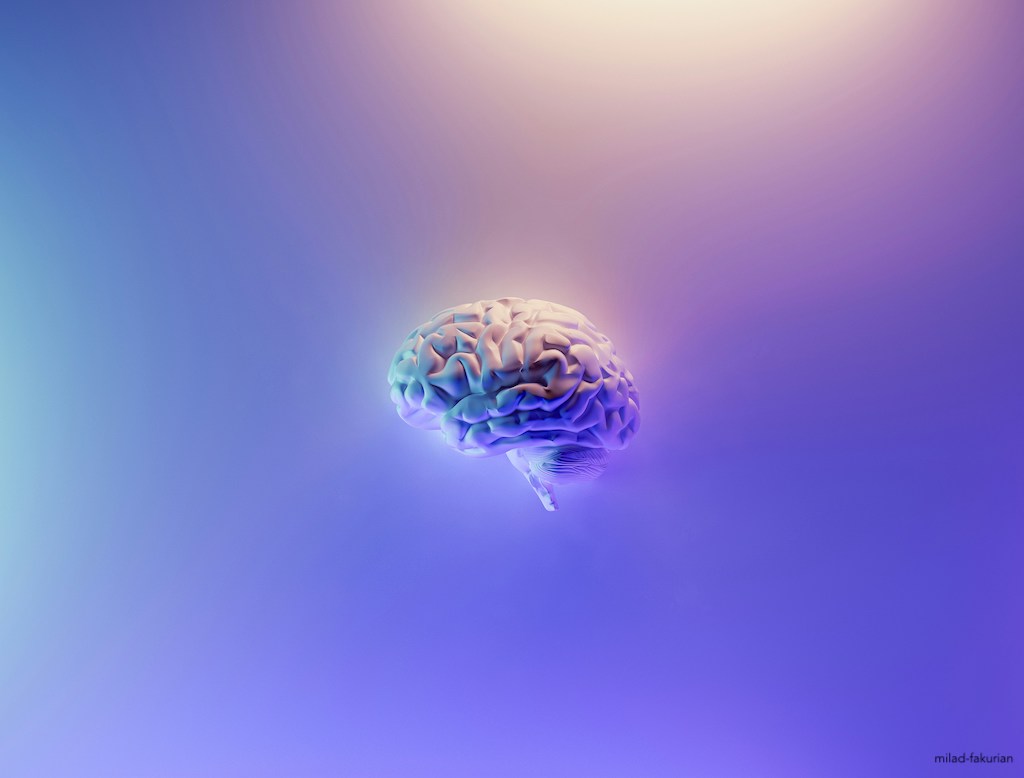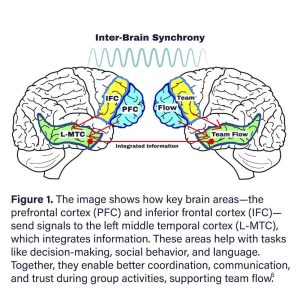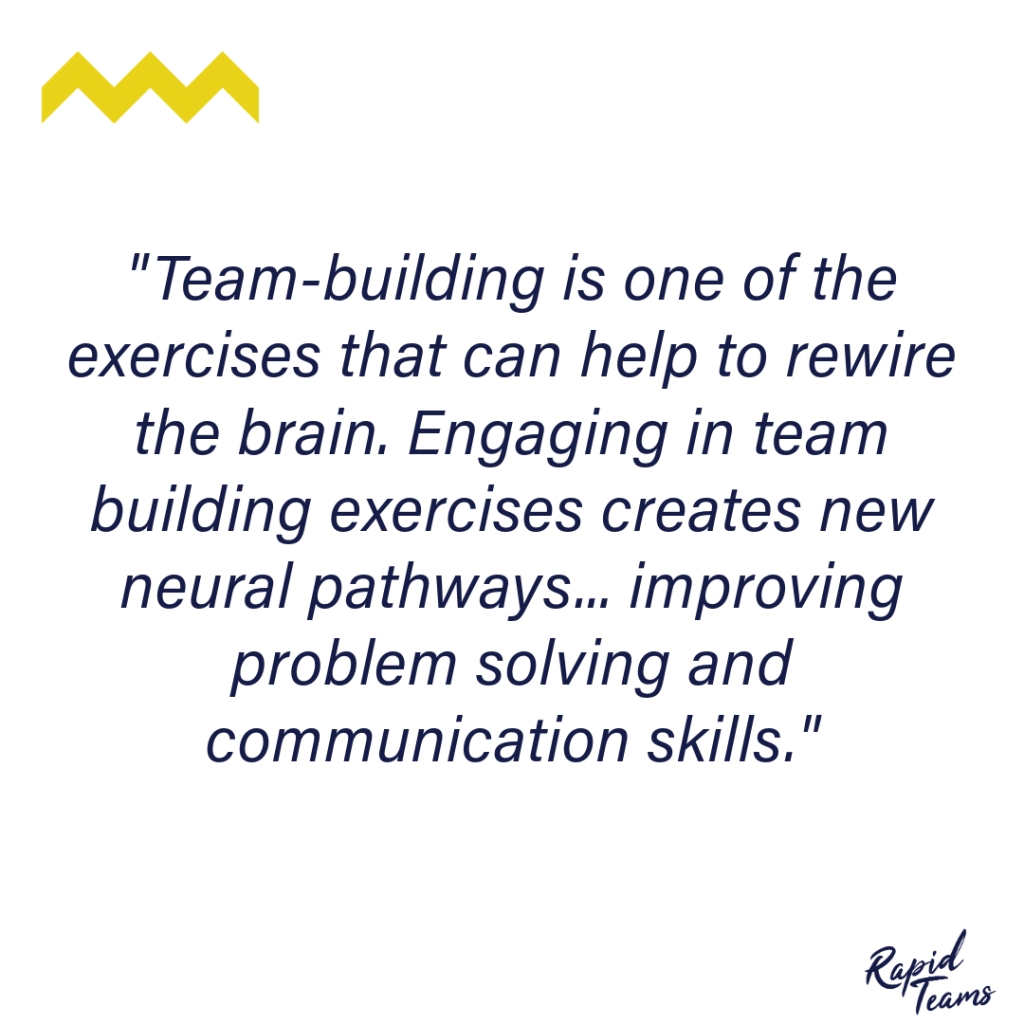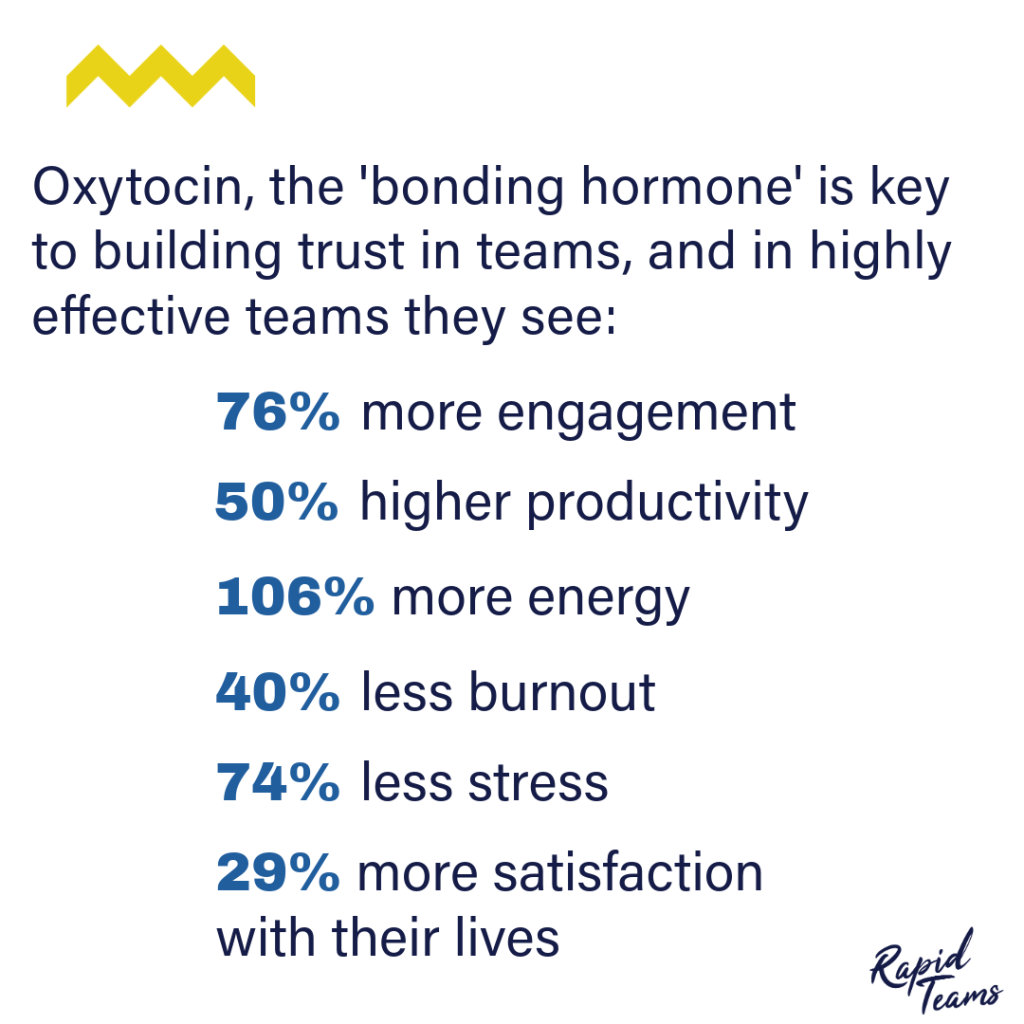This blog is written by Fletcher Gardner, a Rapid Teams team member who just completed his studies in Neuroscience. We asked Fletcher to dive deep into what’s going on “behind the scenes” when we engage in team-building activities.
Introduction
There’s a famous saying: “Teamwork makes the dream work,” and this couldn’t be truer in today’s world. The secret to teams that effortlessly “click” and achieve extraordinary results goes beyond strategies and tools—it lies deep within our brains.
With a Bachelor’s in Biomedical Science, majoring in Neuroscience, I’m here to share how intriguing team building is from a neuroscience perspective. Drawing on research and studies from my degree, I’ll provide an alternative view on how team building reshapes and influences our brains.
What is Team Building?
Team building turns a group of individuals into a cohesive unit that works together interdependently to meet their goals. In today’s rapidly evolving work environment, team building is crucial for fostering collaboration and enhancing productivity.
Neuroscience of Team Building
Before diving into the neuroscience of team building, let’s briefly define neuroscience. In short, neuroscience is the study of the development, structure, and function of the nervous system. It explores how the brain and nervous system impact our behaviours, thoughts, and emotions. By understanding these links, we can gain valuable insights into how teams work together and achieve results.
Researchers at Toyohashi University of Technology identified ‘team flow’ as a brain state that occurs when groups are highly engaged in achieving a common goal. Team-building exercises emphasise team flow by encouraging individuals to collaborate towards a shared objective. This brain state is linked to the left middle temporal cortex (L-MTC), which plays a key role in information integration.
Team flow was found to improve inter-brain synchrony, where individuals’ brain regions exhibit similar neural activity when engaging in cooperative tasks. This synchrony facilitates effective communication and understanding, enhancing teamwork.
Neuroplasticity: The Changing and Adapting Brain
One of the most fascinating aspects of our brain is neuroplasticity. Neuroplasticity refers to the brain’s ability to change and adapt over time, especially in response to experiences and stimuli.
Team building can rewire the brain by creating new neural pathways, improving problem-solving and communication skills. Regular team-building exercises can enhance brain function, helping teams to work better together. Like any habit, consistency is key. Without regular practice, the brain may revert to previous neural pathways, so continuous team-building activities are essential.
The Empathy Engines: The Power of Mirror Neurons
Neurons transmit signals through electrical impulses, enabling us to move, think, and feel. Mirror neurons are a specialised subset that activate when we perform an action and when we observe someone else doing the same. These neurons facilitate empathy by allowing us to emotionally connect with others.
Research suggests that 84% of CEOs believe empathy drives better business outcomes, yet only 1 in 4 employees think their organisation has enough empathy. Team building strengthens empathy by building trust, promoting cooperation, and resolving conflicts.
Unlocking Peak Performance Through Neurotransmitters
Three key neurotransmitters—dopamine, acetylcholine, and noradrenaline—drive high-performing teams.
- Dopamine: Known as the “happy chemical,” dopamine drives reward-seeking behaviour and motivates us to pursue goals. Leaders can harness dopamine by setting clear goals, recognising achievements, and providing growth opportunities.
- Acetylcholine: Linked with focus and learning, acetylcholine enhances teams that prioritise continuous learning and intellectual curiosity.
- Noradrenaline: This neurotransmitter regulates arousal, attention, and stress reactions, helping teams respond swiftly to challenges without being overwhelmed.
By understanding how these neurotransmitters influence behaviour, leaders can develop strategies to optimise team performance.
Oxytocin: The Trust Builder
Trust is the foundation of high-performing teams. At high-trust companies, employees experience less stress, more energy, and higher productivity. Oxytocin, the “bonding hormone,” fosters trust through positive social interactions. Building an environment that encourages oxytocin release leads to stronger team connections and improved collaboration.
Summary
It’s fascinating to see how much our brains play a role in the success of a team. From neurotransmitters driving motivation and trust to neuroplasticity fostering adaptability, teamwork isn’t just about cooperation—it’s about creating an environment where our brains can thrive. When we understand these neurological underpinnings, we can build teams that are not only efficient but genuinely connected and resilient.
References:
- Fapohunda T. Towards Effective Team Building in the Workplace. 2013.
- Zak PJ. The Neuroscience of Trust. Harvard Business Review [Internet]. 2017 Jan 1 [cited 2024 Aug 16]; Available from: https://hbr.org/2017/01/the-neuroscience-of-trust
- Kennedy JJ. Psychology Today. 2023 [cited 2024 Aug 16]. The Neuroscience of Tribalism. Available from: https://www.psychologytoday.com/intl/blog/brain-reboot/202307/the-neuroscience-of-tribalism
- Cooper C. The Importance of Mirror Neurons in High-Performance Work in Meetings and the Workplace [Internet]. Medium. 2023 [cited 2024 Aug 16]. Available from: https://medium.com/@colin-cooper/the-importance-of-mirror-neurons-in-high-performance-work-in-meetings-and-the-workplace-610e9295e74f
- Hunkins A. Forbes. 2021 [cited 2024 Aug 16]. The Great Mistake Leaders Make About Empathy and Accountability. Available from: https://www.forbes.com/sites/alainhunkins/2021/06/29/the-great-mistake-leaders-make-about-empathy-and-accountability/
- Shehata M, Cheng M, Leung A, Tsuchiya N, Wu DA, Tseng CH, et al. Team Flow Is a Unique Brain State Associated with Enhanced Information Integration and Interbrain Synchrony. eNeuro. 2021;8(5)
- .0133-21.2021.
- Ross HE, Young LJ. Oxytocin and the Neural Mechanisms Regulating Social Cognition and Affiliative Behavior. Front Neuroendocrinol. 2009 Oct;30(4):534–47.
- Ashenden P. Lifesize. 2020 [cited 2024 Aug 16]. Nonverbal Communication: How Body Language and Nonverbal Cues Are Key. Available from: https://www.lifesize.com/blog/speaking-without-words/
- Cline J. Neuroplasticity Exercises for Team Building. C-Suite Network TM [Internet]. 2023 [cited 2024 Aug 16]. Available from: https://c-suitenetwork.com/neuroplasticity-exercises-for-team-building/
- Platt M, Johnson E. How to Use Neuroscience to Build Team Chemistry [Internet]. Knowledge at Wharton. 2023 [cited 2024 Aug 16]. Available from: https://knowledge.wharton.upenn.edu/article/how-to-use-neuroscience-to-build-team-chemistry/
- Voznaya A. How Neuroscience Can Help Build Better Teams: The Science of Social Interaction – Part 1 [Internet]. 2023 [cited 2024 Aug 16]. Available from: https://mentorcruise.com/blog/how-neuroscience-can-help-build-better-teams-the-science-of-social-interaction-part-1/
- Cherry K. Verywell Mind. 2024 [cited 2024 Aug 16]. How Brain Neurons Change Over Time From Life Experience. Available from: https://www.verywellmind.com/what-is-brain-plasticity-2794886
- London Image Institute. Do You Know How Much of Communication Is Nonverbal? [Internet]. 2020 [cited 2024 Aug 16]. Available from: https://londonimageinstitute.com/how-much-of-communication-is-nonverbal/
- Petersen AH. TIME. 2021 [cited 2024 Aug 16]. Companies Are Embracing Empathy to Keep Employees Happy. It’s Not That Easy. Available from: https://time.com/6082524/corporate-empathy-trap/
- Afterburner. Brain Chemistry for Building High-Performance Teams [Internet]. Afterburner. 2023 [cited 2024 Aug 16]. Available from: https://www.afterburner.com/brain-chemistry-and-high-performing-teams/
- NIH. Brain Basics: The Life and Death of a Neuron | National Institute of Neurological Disorders and Stroke [Internet]. 2024 [cited 2024 Aug 16]. Available from: https://www.ninds.nih.gov/health-information/public-education/brain-basics/brain-basics-life-and-death-neuron
- Department of Neuroscience. About Neuroscience [Internet]. Department of Neuroscience [cited 2024 Aug 16]. Available from: https://neuro.georgetown.edu/about-neuroscience/
- Daly R. AIIR Consulting. 2020 [cited 2024 Aug 16]. 22 Insightful Statistics on Team Performance and High-Performing Teams. Available from: https://aiirconsulting.com/resource/22-statistics-that-reveal-the-truth-about-teams/
